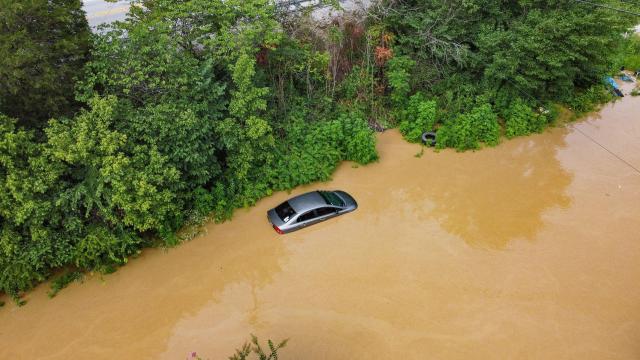Flash floods are some of the deadliest weather events in Australia, and they’re becoming more common under climate change. While you may not be able to prepare for every emergency, there are some things you can do to reduce your risk of dying or needing rescue in flooding.
When there’s heavy rainfall in a short period of time, flash flooding can occur, sometimes within mere minutes. Floods are nothing new, but the warming climate is causing heavy rains to occur more frequently and to drop more water.
1. Never walk or drive through flood waters
Because flash floods develop so quickly, people living near areas that are newly prone to these floods may not take the initial shallow water seriously. More than half of flood-related deaths occur inside of vehicles, said Kate Abshire, the national flash flood services lead for the National Weather Service. She explained that cars become “metal bubbles” during flash floods, and once a vehicle is swept away, it’s difficult for passengers to get out safely.
“We have the ‘turn around don’t drown’ slogan for a reason. It only takes six inches of moving water to sweep someone off their feet and 18 inches to float a vehicle,” Abshire said. “It’s often very difficult to assess the depth of the water if it’s running muddy. Take alternative routes. Don’t drive through the flood waters.”
If you do not have to go out during heavy rain, it’s best to stay where you are. If the worst does happen and you find yourself in a car in rising water, ABC News has published tips for what steps to take, including rolling your windows down as soon as possible and moving to the roof of the vehicle.
2. Know your evacuation routes
So, we’ve just said to stay where you are — but what if you need to evacuate? Knowing alternative routes ahead of time can help get you safely away from a flooded area, especially when a main road is unusable. Look up different highways and roads near you, and save some of those directions on your phone. Share the information with friends and family so that they know where you’ll be headed, in case you end up needing help.
If you aren’t sure what routes are likely to be safe, try searching “[your city name] flood map,” which should lead you to local tools for seeing where in your community is at higher risk of flooding.
3. Know how to get emergency alerts and weather updates
Follow online accounts like national weather services or the BOM Twitter accounts.
You can also download the BOM weather app which details all the various weather warnings available.
Your mobile phones built-in weather apps should also have weather warnings and updates.
